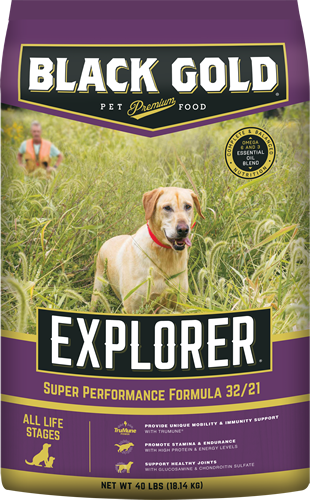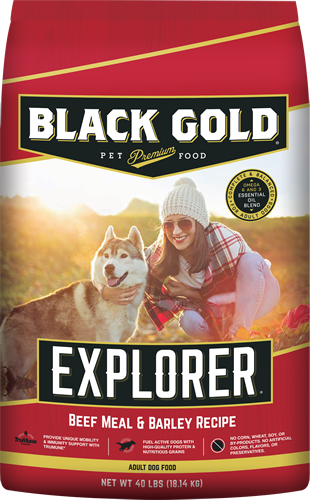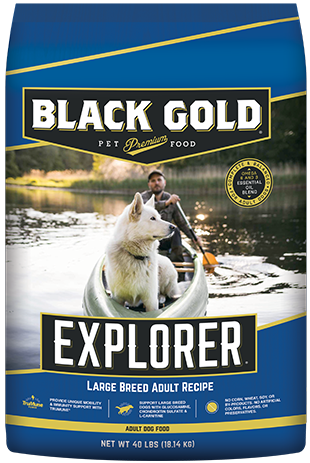What You Should Know About Your Dog’s Joint Mobility
It’s a joy to watch a dog run and romp outside; their fluid jumps over a fallen tree, their quick pivots as they smell something different, and how they trot easily down the path by your side. Their bodies are designed for exploration and movement. Doing what we can to help them stay mobile is one more way to love them well.
THE ANATOMY OF MOVEMENT
Just like us, our canine companions have muscles, bones, tendons, and ligaments that are supposed to work together like the proverbial well-oiled machine.
Joints are connections between bones which allow range of movement. Ball and socket joints such as the hips and shoulders rotate in multiple directions, and hinge joints at the elbows and knees allow bending, stretching, and turning movements.
Ligaments are fibrous tissues that connect bones to bones and also support organs.
Tendons are fibrous tissues that connect muscle to bone.
Synovial fluid is a gel-like substance that acts as a lubricant and reduces friction between bones and between cartilage. Elderly dogs have less synovial fluid, resulting in bone degradation and pain, as well as arthritis.
Cartilage lines the ends of bones and acts as a shock-absorber to lessen the impact of running and jumping. Cartilage, once damaged, is difficult to heal.
Good nutrition can help provide the essential building blocks your dog’s skeletal system needs for health. As the macro- and micro-nutrients from food are digested and metabolized, they replenish and repair muscles and support bone health to withstand the normal wear and tear of living.
WHAT CAUSES JOINT PAIN IN DOGS?
If only our furry friends could tell us where it hurts. Call your dog to come to you. Observe them as they lie down and get up again. Throw a ball and watch them run. If they’re not moving as well as they used to, joint pain may be the reason.
Joint pain occurs in all breeds and ages of dogs, but is especially prevalent in older dogs.
- Developmental joint conditions can be genetic or related to issues during the growth period. For example, a too-big hip bone that fits poorly in the hip socket will cause bones to rub together.
- Degenerative joint conditions happen when joints are worn down by repetitive use or by injury. For example, osteoarthritis is a condition where cartilage around the joint deteriorates and bone breaks down, eventually causing pain and stiffness.
Left untreated, the underlying causes of joint pain can lead to serious injuries and chronic health conditions. Younger dogs will often continue to play enthusiastically and worsen their condition, so it’s important to pay close attention to any changes in mobility.
HOW TO SPOT JOINT PAIN
Learn how to spot the early signs of joint issues and read your pup’s behavior when it comes to pain. Watch for these signs:
- Stiffness and limping: Does your dog favor one side over the other?
- Instability: Is your dog slipping or sliding when walking or running?
- Avoidance: Is your dog avoiding running and jumping or having difficulty with stairs?
- Front dominance: Is your dog only using its front legs to rise after sitting or lying down? Dogs with dysplasia avoid putting pressure on their back legs.
- New behavior: Is your normally sweet pup irritable or aggressive? Does it get upset when you come near them or try to touch them in certain spots?
- Lethargy: Is your normally active dog sleeping more, or seem depressed? A pup in pain doesn’t see the joy of daily activities.
- Chewing a limb: Is your dog licking, biting, or chewing a limb? This is a common response to heal or relieve pain.
FOUR TIPS FOR SUPPORTING DOG JOINT MOBILITY
- Extra weight means extra pressure on joints and more friction on cartilage. Keep your dog at an optimum weight to reduce pressure on their joints.
- Select a diet with healthy ingredients and add a Hip & Joint dietary supplement with glucosamine and chondroitin sulfate. When your dog has supple joints, they’re ready for adventure whenever you are.
- Low-impact exercise is better for dogs with joint conditions. Think quality time on a relaxed walk, or swimming in a pond or lake.
- Stretching and gentle massage can help relieve pain. Ask your vet for suggestions appropriate for your dog’s condition.
Identifying joint issues and addressing them early can prolong your dog’s happiness and quality of life. Your first step is to determine how severe the issue is and what’s causing it by talking to your vet. While conditions such as hip or elbow dysplasia may require surgery, degenerative conditions like arthritis can be relieved or treated with rehabilitation and proper nutrition.
Dogs love to be on the go. Help them keep going by supporting their joint mobility in every way you can.
Learn more about keeping your dog on the go with proper nutrition.










Share This Post